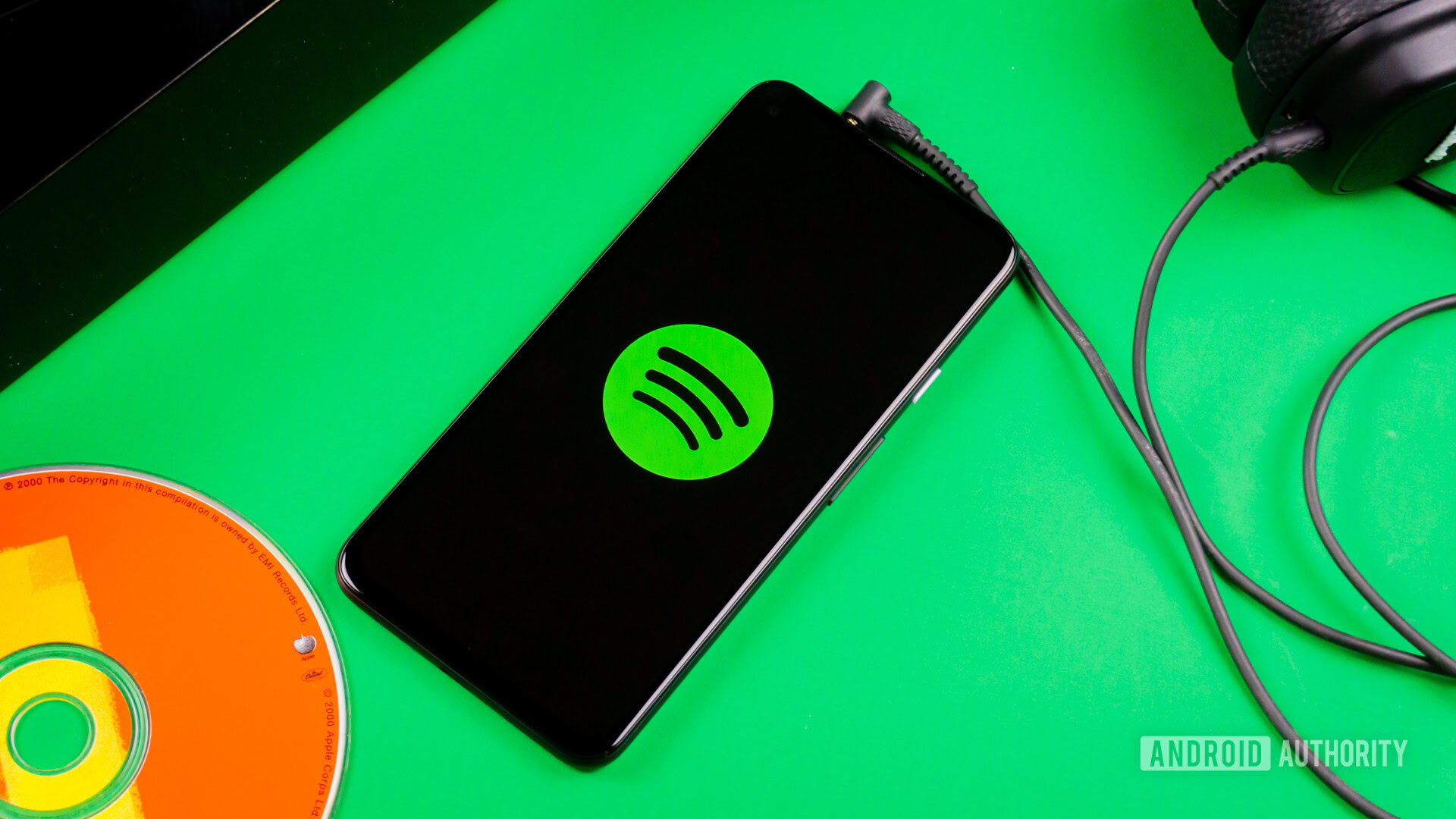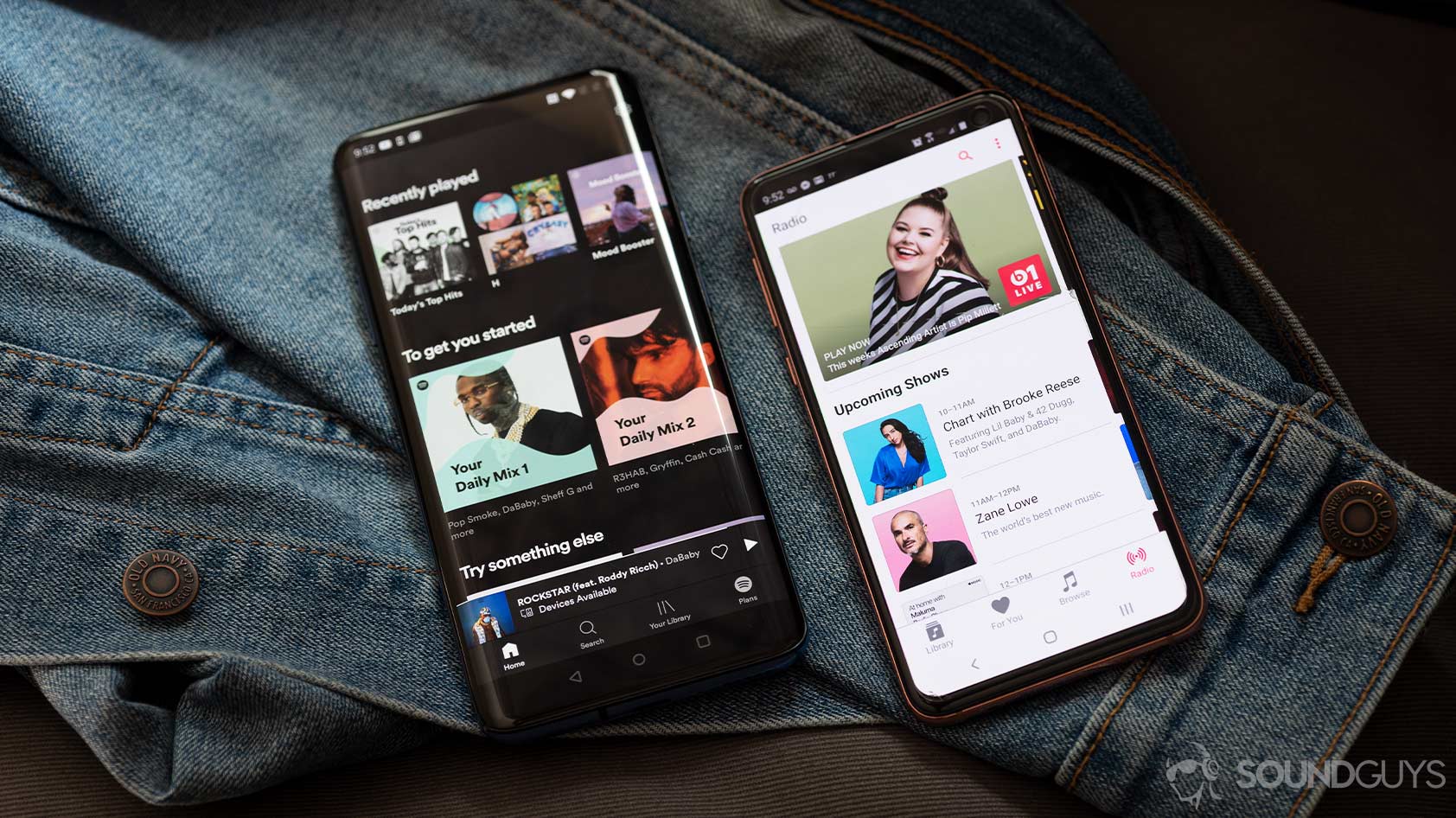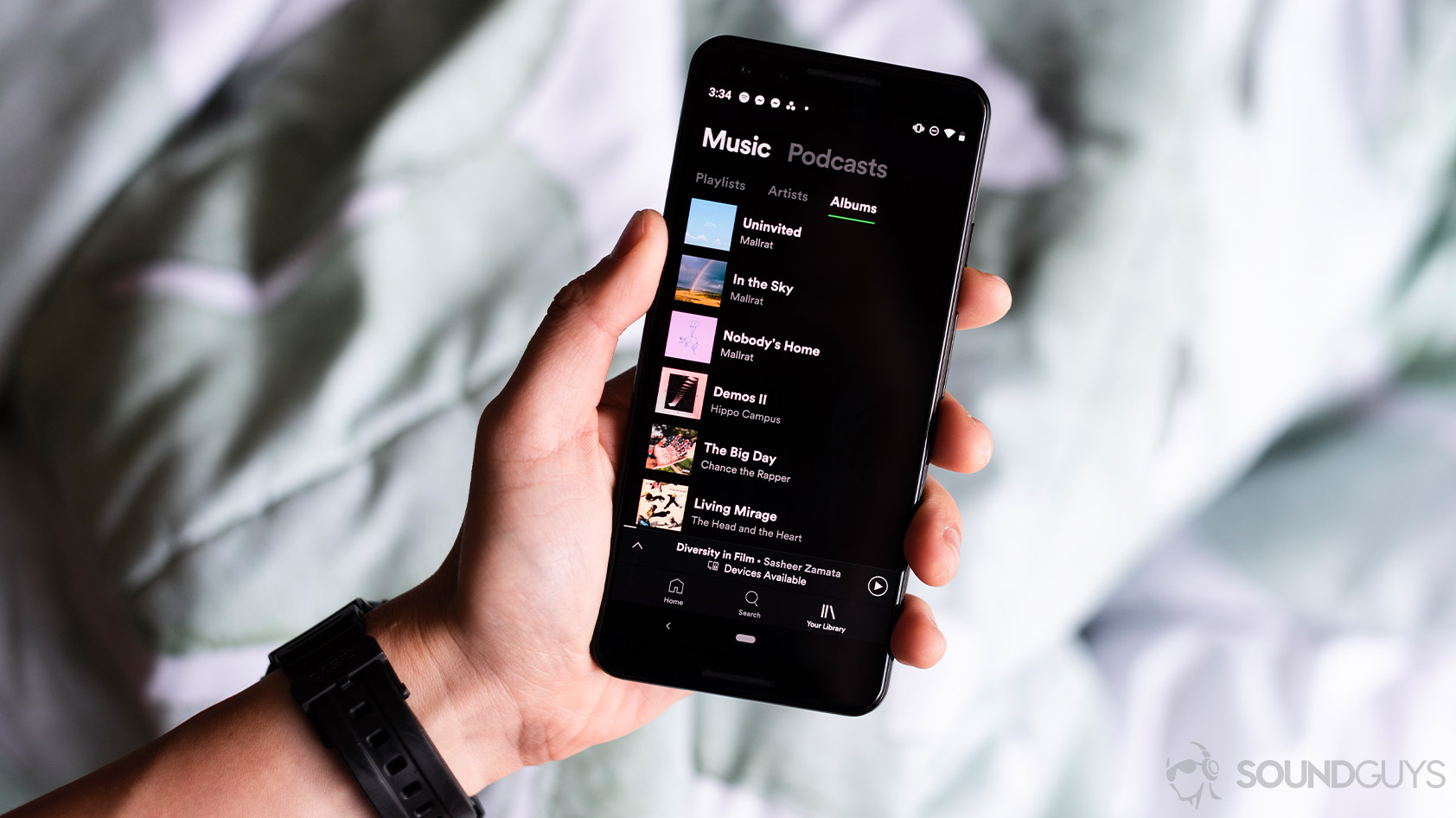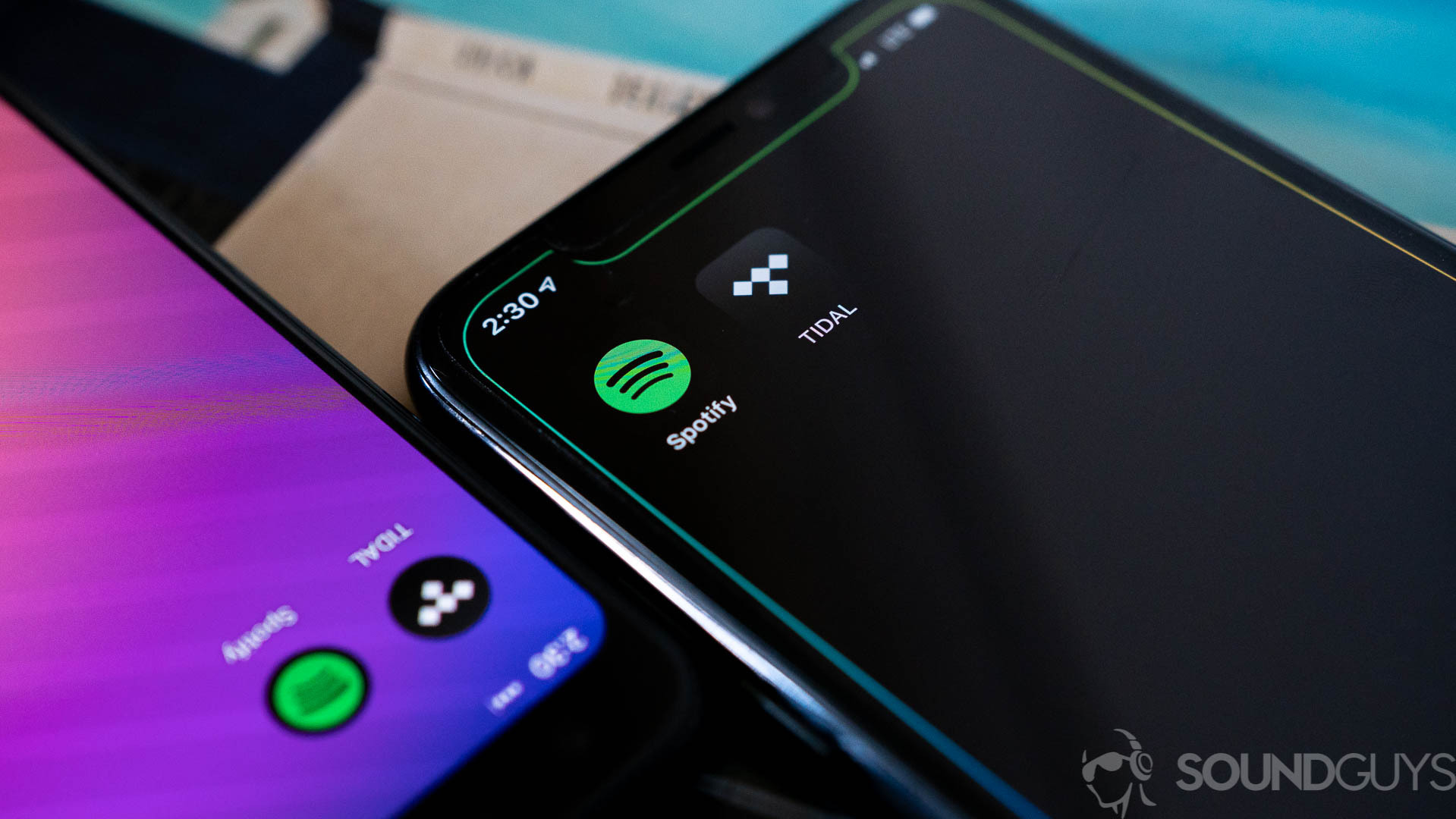All products featured are independently chosen by us. However, SoundGuys may receive a commission on orders placed through its retail links. See our ethics statement.
Is Spotify good for artists?
Published onSeptember 23, 2024

There is no doubt that the advent of Spotify has drastically changed how we consume music. Gone are the days when most fans would buy their favorite artists’ music outright. Instead, streaming represents over 65% of global recorded music revenue. Many have switched to paying a monthly subscription to rent their music from streaming services. Spotify is the largest and has over 626 million monthly users globally, with 246 million paying for premium memberships. However, Apple Music, Tidal, Amazon Music, YouTube Music, Deezer, and Qobuz are all now major players in the music streaming sphere. Unfortunately, the rise of these services has profoundly impacted independent musicians’ ability to sustain their creative outlet both artistically and financially (myself included.)
My bad habits lead to… Spotify

Spotify was established in 2006 by Daniel Ek and Martin Lorentzon to combat the rampant rise of music piracy in the early 2000s. However, it has since become the largest music streaming platform in the world, and for good reason. The service has a pleasing and intuitive user experience, an enormous music library of over 100 million songs, and many artist discovery tools. Depending on your location, Spotify offers a list of differently-priced memberships for individuals, duos, families, and students. It also operates a free version which raises revenue from playing adverts randomly between songs.
The Spotify Free membership works differently across various devices though. For example, running Spotify on Windows or MacOS begets a complete service fit with unlimited song and podcast streaming. Fans can also curate personal playlists and use the program’s comprehensive discovery algorithm to unearth new artists. On the other hand, the mobile version comes with some fairly major caveats. For example, your “liked” songs can only be played in shuffle mode. If it lands on a song you’re not feeling at that moment, you only receive six skips per hour. The intermittent adverts are also intentionally annoying, persuading you to upgrade to a premium membership.
Spotify offers differently-priced membership tiers to entice you into upgrading from Spotify Free.
Unlike CDs or other high-quality music media formats, Spotify Free has a maximum streaming quality of 160kbps. Those willing to shell out $10.99 monthly for Spotify Premium receive up to 320kbps on the desktop and mobile apps. The company even claimed it was bringing a new lossless-quality tier, Spotify HiFi, to fruition in 2021. Unfortunately, fans have received no recent updates to shout about.
To its credit, Spotify has some handy features to help artists promote other aspects of their creative business. For example, musicians can sell merchandise directly through Spotify using the integrated Shopify e-commerce platform. Artists can also list their live events directly from their Spotify profile, with links forwarding fans to trusted ticketing providers. Spotify Canvases can help promote new music videos, and lyrics can be synchronized with tracks in real-time. The company’s sister app, Spotify For Artists, provides useful insights and backend settings so you can target your music more efficiently. With so many promotional tools and features, how can Spotify be bad for emerging artists? Well, it all rests in the murky waters of streaming revenues.
Sharing is caring (except for Streamshare)

Over the years, there has been a lot of conversation about how much Spotify pays out in royalties for every song streamed. This is a complicated and divisive topic. Thankfully, Spotify is open to disclosing its payment model. Generally speaking, music on Spotify earns two separate types of royalties. The first is recording royalties, which covers money owed to rightsholders for music directly streamed from Spotify. This is subsequently collected by a licensor — usually a record label or music distributor. The second is publishing royalties, which are monies due to the owners or songwriters of a composition.
It’s worth remembering that Spotify does not pay artists or songwriters directly. Instead, the company pays the rightsholders, with which it has separate agreements. Consequently, royalties vary between artists based on how the music is streamed and artists’ contracts with labels or distributors. That said, Spotify pays out roughly two-thirds of the money it takes from premium memberships and advertisers on its platform. It then pays between 75-80% of funds earned from recording royalties and 20-25% earned from publishing. Fun fact; Spotify had an operating income of nearly $300 million in Q2 of 2024 alone.
Spotify's new royalties policy means songs with fewer than 1,000 yearly streams will not receive recording royalties.
However, in November 2023, Spotify announced a policy overhaul that sent shockwaves through the independent music scene. Controversially, songs with fewer than 1,000 yearly streams no longer earn recording royalties. Spotify claims this policy targets around 10 million tracks on its platform, each generating $0.03 per month on average. However, given these tracks represent 0.5% of the company’s $9 billion royalty pool, this equates to roughly $40 million. Rather than going to the appropriate artists, it is redirected and redistributed amongst the 99.5% of other, more streamed artists on the platform. According to Spotify, this prioritizes those most dependent on streaming revenues as part of their livelihood.
“Streamshare” calculates artist royalties and is not unique to Spotify. Simply put, the platform adds up how often an artist’s music is streamed and divides it by the total number of streams in that market. While this may sound fair in principle, it means that Spotify pays between $0.003 and $0.005 per stream. To put that into perspective, an artist would need roughly 800,000 monthly streams to earn $15 per hour in the US. Likewise, an artist would need approximately 3,000 streams to earn the same amount as directly selling an album priced at $9. While I love music, I’m not sure I have ever listened to a single song 3,000 times, let alone an album (sorry, QOTSA!)
Music streaming platform’s average royalty payouts per stream
| Music streaming platform | Average royalty payouts per stream |
|---|---|
Qobuz | $0.022 |
Napster | $0.02 |
Tidal | $0.013 |
Apple Music | $0.01 |
Deezer | $0.0064 |
Spotify | $0.003 - $0.005 |
Amazon Music | $0.00402 |
SoundCloud | $0.0025 - $0.004 |
Pandora | $0.00133 |
YouTube Music | $0.00069 - $0.0012 |
Royalties from music streaming services are calculated on a stream share basis. However, it is possible to estimate payouts per stream. As the table above notes, Qobuz pays artists roughly $0.022 per stream and is subsequently the highest earner for artists. Conversely, Spotify ranks sixth below its main rivals Tidal and Apple Music, which pay an average of $0.013 and $0.01 per stream respectively. YouTube Music is at the bottom of the list, profiting musicians just $0.00069 – $0.0012 per stream. It is worth noting that the variable pay rates depend on subscription plans, country, region, and individual artist contracts with the rightsholder.
To put these figures into real terms, we can compare the approximate earnings of a single song with each streaming platform. At the time of writing, my band’s song “El Dorado” has roughly 109,000 streams on Spotify, earning around $476 in royalties. However, if this song had the same number of streams on Qobuz, my band would earn nearly $2400. Shockingly, YouTube Music would pay out approximately just $100. Considering the costs of studio rent, hiring a recording engineer, mixing, and mastering, it is hard to break even from streaming alone. Instead, my band has pivoted to working with a publisher to obtain synchronization deals within television and film. While this can recoup more money than streaming, you generally give away 50% of mechanical and residual income.
Aside from publishing deals, most of my band’s income stems from merch sales and live fees. Unfortunately, the cost of producing vinyl records has soared in recent years due to supply chain issues and the cost of raw materials like PVC. As an independent artist, this has meant fronting much higher debts and taking home less profit per record. Vinyl pressing lead times are much longer now than a few years ago. For example, artists can expect to wait an average of 9-12 months for delivery. While streaming could be viewed as an interim earner, some collective management organizations like PRS for Music only make four payouts per year. Additionally, record labels and distributors often take a large cut of total streaming revenue, leaving artists with little earnings.
Being alternative is always cool

With all that said, we cannot underestimate how much power and industry leverage Spotify has to promote what it considers popular or good music. The rollout of Spotify-curated editorial playlists and algorithmic Discover Weekly and Spotify Radio playlists have handed the company unbelievable control over what music we hear.
Without a sizable organic following, independent artists are left competing for the attention of DSPs (Digital Service Providers.) These decide which songs and artists appear on popular editorial playlists and directly influence how discoverable an artist is. Given streaming platforms are now major players in the music industry, few record labels will consider artists with low streaming numbers. While this doesn’t directly correlate to an artist’s success in other areas such as live performance or synchronization deals, Spotify is undeniably vital to the prospects of aspiring and emerging artists.
Alternative music streaming platforms like Bandcamp and Soundcloud are attractive options for emerging artists.
It isn’t all doom and gloom, though. For nearly two decades, sales of vinyl albums have been steadily increasing. In addition to receiving a tangible, pleasing material product, artists usually keep more revenue. It isn’t just vinyl records that support grassroots artists either. Many underground music fans engage with their favorite musicians by purchasing merchandise and attending concerts. This can be the difference between recording a second album and putting a guitar back in its case for good.
Some musicians have taken matters even further by erasing their presence on Spotify. Subsequently, some emerging artists are listing their music on websites like Bandcamp and Soundcloud. Bandcamp claims it pays between 80-85% of the money earned on its website to registered artists and labels. Soundcloud is an open platform music site with a reputation for promoting lesser-known artists. In particular, musicians can grow their fanbase by using dedicated tools, services, and resources. Soundcloud also pays artists 100% of the royalties earned from monetized tracks on its platform.
But what do you think? Is Spotify good for discovering and supporting emerging artists, or should the company lobby the music industry for a more user-centric model?
Is Spotify good for discovering emerging artists?
FAQs
Musicians and songwriters can certainly gain exposure from Spotify’s algorithmic and editorial playlists. The platform also allows artists to sell merchandise and tickets directly. However, earning a livable wage from streaming revenue alone is difficult unless your songs receive hundreds of thousands of monthly plays.
Not directly. However, some artists feel the average $0.003 paid in royalties per stream is unfair. Despite this, Spotify is an excellent tool for discovering new artists and has successfully tackled music piracy during its tenure.
The biggest issue for most artists using Spotify is how little revenue streaming provides. Royalties vary based on how an artist’s music is streamed and their specific agreement with a licensor. On average, an artist can expect to earn between $0.003 and $0.005 per stream. Many artists and industry insiders consider this extremely low.
The answer likely depends on who you ask. Some artists have gained exposure they would have otherwise never had without Spotify. Musicians and songwriters with a catalog of songs earning hundreds of thousands of streams may also earn a living from royalties alone. However, many emerging artists consider Spotify’s pay model unfair, with some boycotting the platform entirely on these grounds.
You can use a service such as TuneMyMusic to transfer your Spotify playlists to another streaming service.